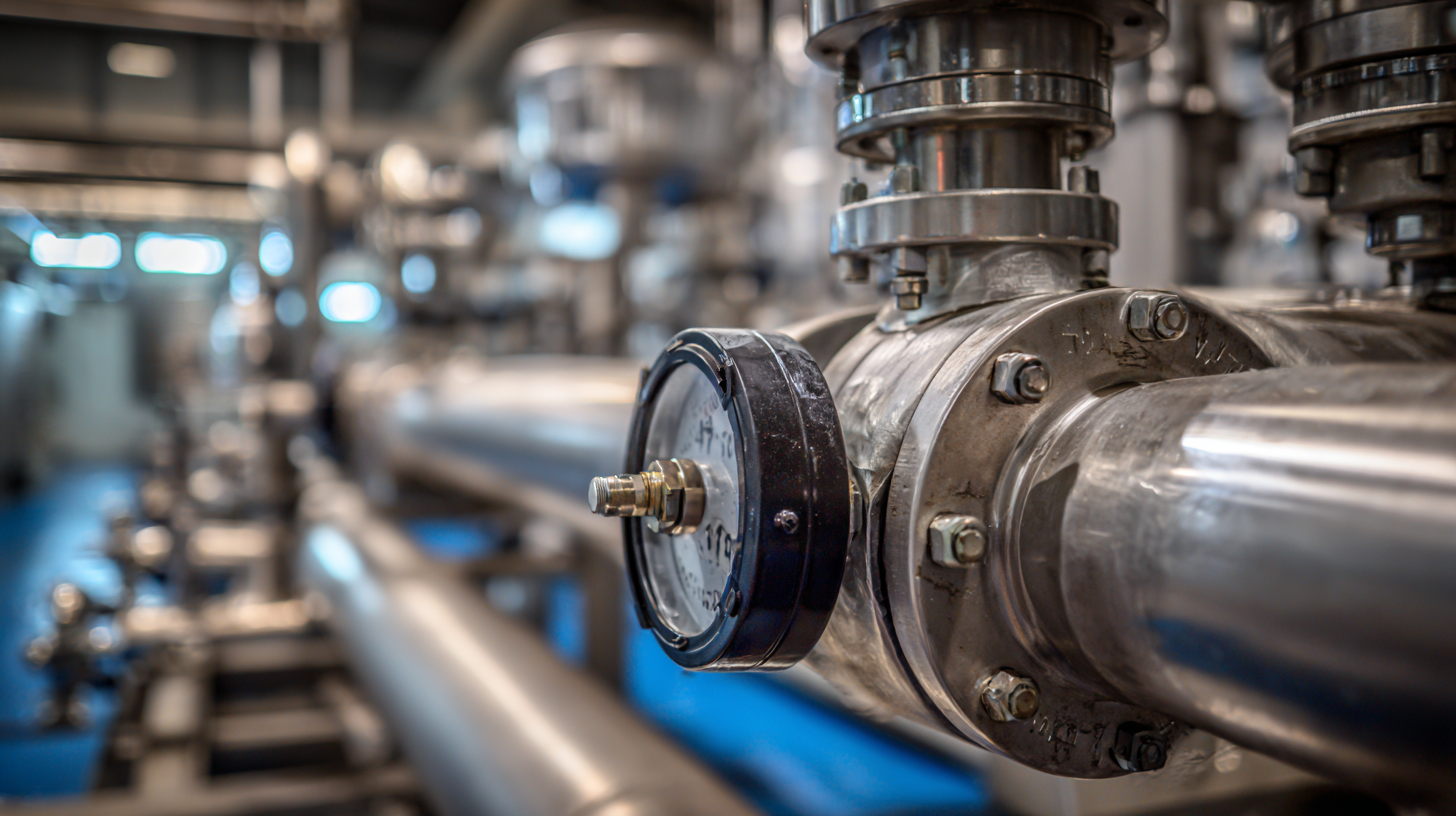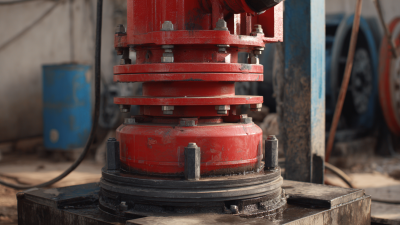How to Choose the Right Solution Pump for Your Business Needs
Selecting the right solution pump for your business is a critical decision that can significantly impact your operational efficiency and productivity. With a myriad of options available on the market, understanding the specific requirements of your application becomes essential. This guide aims to equip you with the necessary insights into the various types of solution pumps, their functionalities, and how to evaluate them based on your unique business needs. Factors such as flow rate, viscosity, and the nature of the fluids being pumped play a crucial role in determining the most suitable solution pump for your operations. By carefully considering these aspects, businesses can not only enhance their process performance but also achieve cost-effectiveness and reliability in their fluid transfer systems. Let’s delve into the essential criteria that will guide you in making an informed choice about your ideal solution pump.

Understanding Different Types of Solution Pumps and Their Applications
 When selecting a solution pump for your business, it's crucial to understand the different types available and their specific applications. Solution pumps can be broadly categorized into centrifugal, positive displacement, and diaphragm pumps. Centrifugal pumps are best suited for applications involving low-viscosity fluids, typically used in processes where a continuous flow is required. They offer efficiency and are ideal for moving large volumes of liquid quickly.
When selecting a solution pump for your business, it's crucial to understand the different types available and their specific applications. Solution pumps can be broadly categorized into centrifugal, positive displacement, and diaphragm pumps. Centrifugal pumps are best suited for applications involving low-viscosity fluids, typically used in processes where a continuous flow is required. They offer efficiency and are ideal for moving large volumes of liquid quickly.
Positive displacement pumps, on the other hand, are designed to handle higher viscosity fluids and deliver a consistent flow rate regardless of pressure changes. These pumps are essential in industries such as oil and gas, where precise fluid movement is necessary. Lastly, diaphragm pumps are versatile and can efficiently manage various fluids, including corrosive and abrasive substances. Their design also allows for dry running, making them suitable for applications where the fluid might be intermittently unavailable. Understanding these distinctions will help you choose the right pump that aligns with your operational demands.
Identifying Business Requirements: Flow Rate, Pressure, and Viscosity Considerations
When selecting a solution pump for your business needs, understanding the specific requirements is crucial. The flow rate is often the primary consideration, as it determines how quickly fluid can be delivered to or from a system. Businesses must assess their operational demands and choose a pump that can maintain the desired flow without compromising efficiency. Factors such as peak usage times and the nature of the processes involved should guide this decision.
In addition to flow rate, pressure is a vital aspect that cannot be overlooked. The pump must generate enough pressure to overcome system resistance and effectively transport fluid through the designated piping. High-pressure applications, such as those common in hydraulic systems, demand pumps designed to withstand significant stress. Finally, viscosity plays a fundamental role in pump selection. Different fluids exhibit varying degrees of thickness, affecting how easily they can be moved. A thorough understanding of the viscosity of the fluids being used will help determine the most suitable pump type, ensuring smooth operation and longevity in performance.
How to Choose the Right Solution Pump for Your Business Needs
| Pump Type | Flow Rate (GPM) | Pressure (PSI) | Viscosity (cP) | Application |
|---|---|---|---|---|
| Centrifugal Pump | 50 | 75 | 1-10 | Water Transfer |
| Positive Displacement Pump | 30 | 150 | 10-500 | Viscous Fluids |
| Diaphragm Pump | 20 | 100 | 1-100 | Chemicals |
| Gear Pump | 10 | 200 | 50-1000 | Oil & Lubricants |
| Peristaltic Pump | 5 | 30 | 1-100 | Food Processing |
Evaluating Material Compatibility for Longevity and Performance Efficiency
When selecting a solution pump for your business needs, evaluating material compatibility is crucial for ensuring not only longevity but also performance efficiency. A solution pump often comes into contact with aggressive or corrosive substances, necessitating materials that can withstand harsh conditions. The choice of materials should consider factors such as chemical resistance, temperature stability, and mechanical strength.

For instance, advanced materials like fibre-reinforced polymers have been lauded for their lightweight properties and exceptional corrosion resistance, making them an excellent choice for components exposed to challenging environments.
Recent advancements in material science have contributed to the development of coatings designed to enhance durability and performance. Anti-reflection coatings, for example, have shown promise in protecting surfaces by minimizing optical interference while maintaining accessibility for monitoring system performance. Additionally, considerations surrounding the environmental impact of materials—similar to the assessments seen in energy-efficient construction practices—should guide your decision-making process.
By prioritizing compatibility and sustainability, businesses can ensure that their solution pumps perform efficiently over the long term, thereby reducing operational costs and improving overall reliability.
Assessing Energy Efficiency Ratings and Their Impact on Operational Costs
When selecting a solution pump for your business needs, assessing energy efficiency ratings is crucial in understanding their impact on operational costs. According to the U.S. Department of Energy, poorly selected or maintained pumps can waste up to 20%-50% of energy, which significantly affects a company’s bottom line. Therefore, opting for energy-efficient models, especially those with high-efficiency ratings, can lead to substantial savings over time. For instance, choosing pumps that meet the latest ENERGY STAR guidelines can save businesses thousands in energy costs as they reduce electricity consumption by up to 30%.
Moreover, an energy-efficient solution pump not only lowers operational expenses but also contributes to sustainability goals. A report from the American Council for an Energy-Efficient Economy (ACEEE) suggests that transitioning to energy-efficient pumps across various sectors could reduce greenhouse gas emissions by approximately 10 million metric tons annually. These figures emphasize that while the initial investment in high-efficiency pumps may be higher, the long-term savings and positive environmental impact make them a wise choice for businesses striving to optimize both performance and sustainability.
Energy Efficiency Ratings Impact on Operational Costs
Analyzing Industry Standards and Certifications for Quality Assurance in Pump Selection
When selecting a solution pump for your business, understanding the industry standards and certifications is crucial for ensuring quality and reliability. Different industries have specific requirements that pumps must meet, such as ISO certifications, ANSI standards, or API specifications. These standards not only define the performance and efficiency of pumps but also dictate safety measures and materials suitable for various applications. Familiarity with these guidelines helps businesses select pumps that are not only effective but also compliant with regulatory requirements.
Moreover, certifications from reputable organizations, such as the Hydraulic Institute or the American National Standards Institute (ANSI), provide assurance of the pump’s quality and longevity. Ensuring that the chosen pump has the necessary certifications can mitigate risks associated with equipment failure and non-compliance, which could lead to substantial financial losses and operational downtime. Evaluating these industry standards and certifications is vital in aligning pump selection with your specific business needs and enhancing overall operational efficiency.
Related Posts
-

Exploring Innovative Alternatives to Flo Jet Pumps for Efficient Fluid Management
-

How to Choose the Right Flo Jet Pump for Your Specific Needs
-

7 Best Practices to Maximize Efficiency of Your Well Pressure Pump
-

Understanding the Mechanism of Sucker Rod Pumps in Oil Extraction
-

Ultimate Checklist for Selecting the Right Surface Jet Pump for Your Industrial Needs
-

How to Select the Right Fracking Pump for Your Oil and Gas Operations
